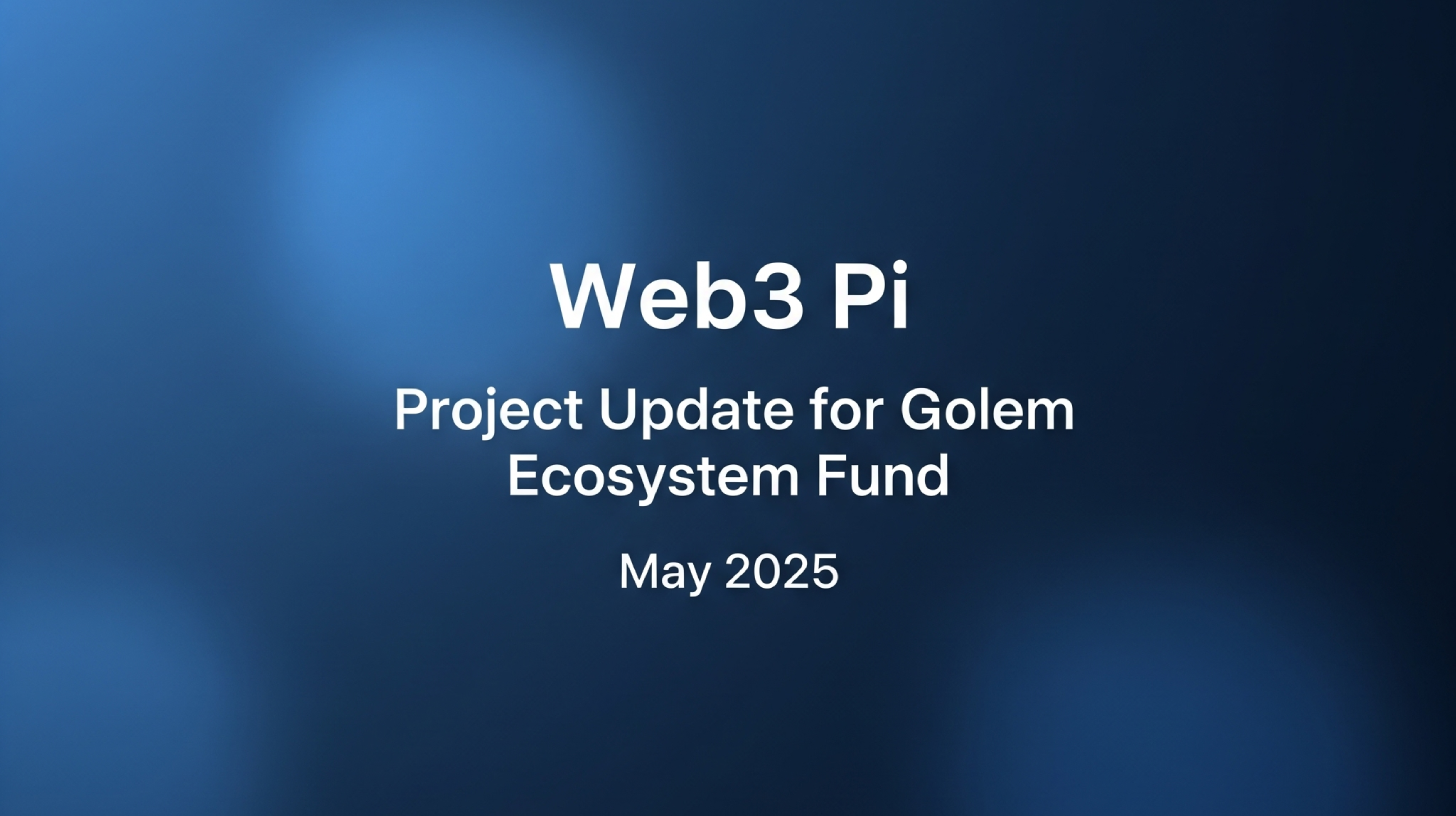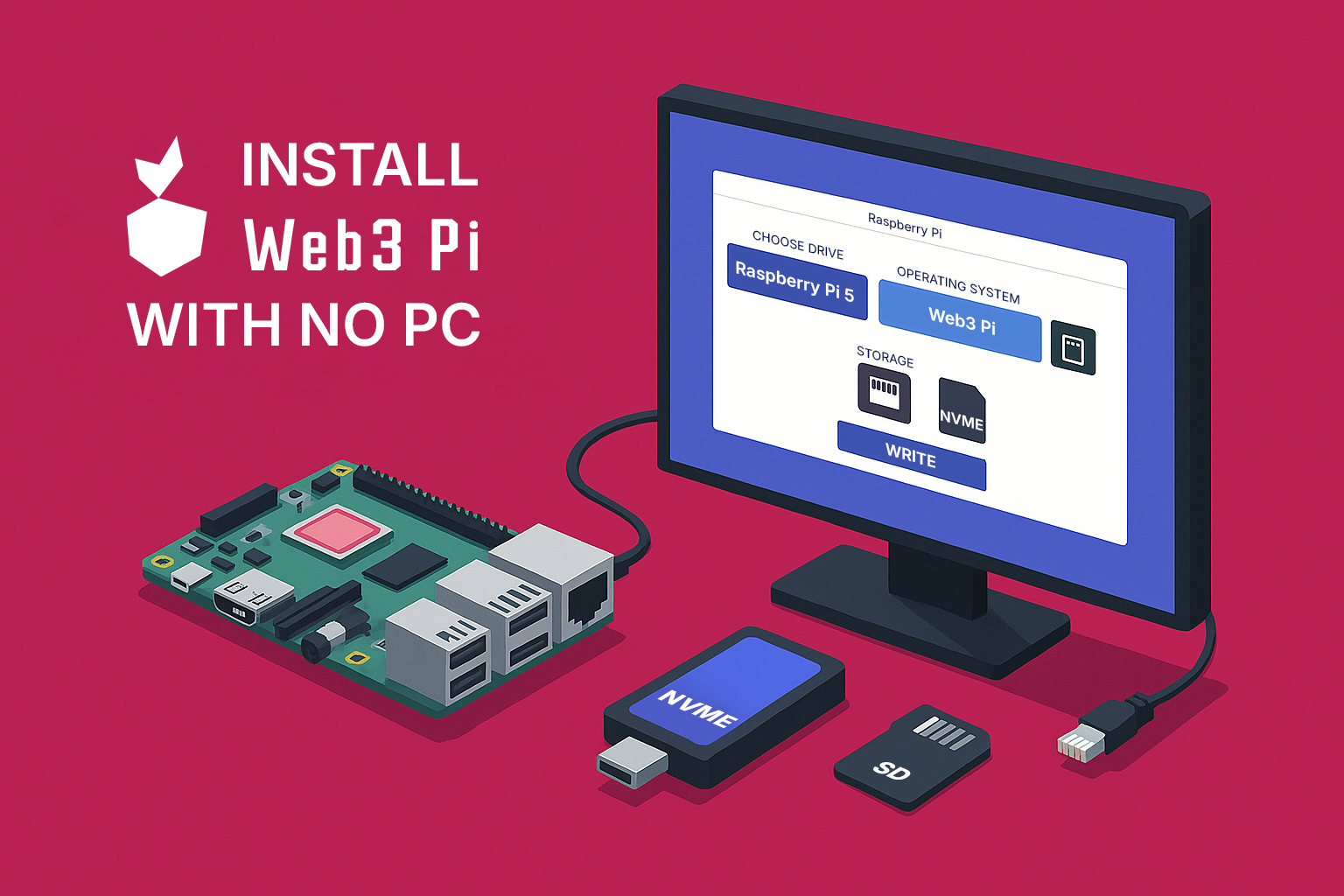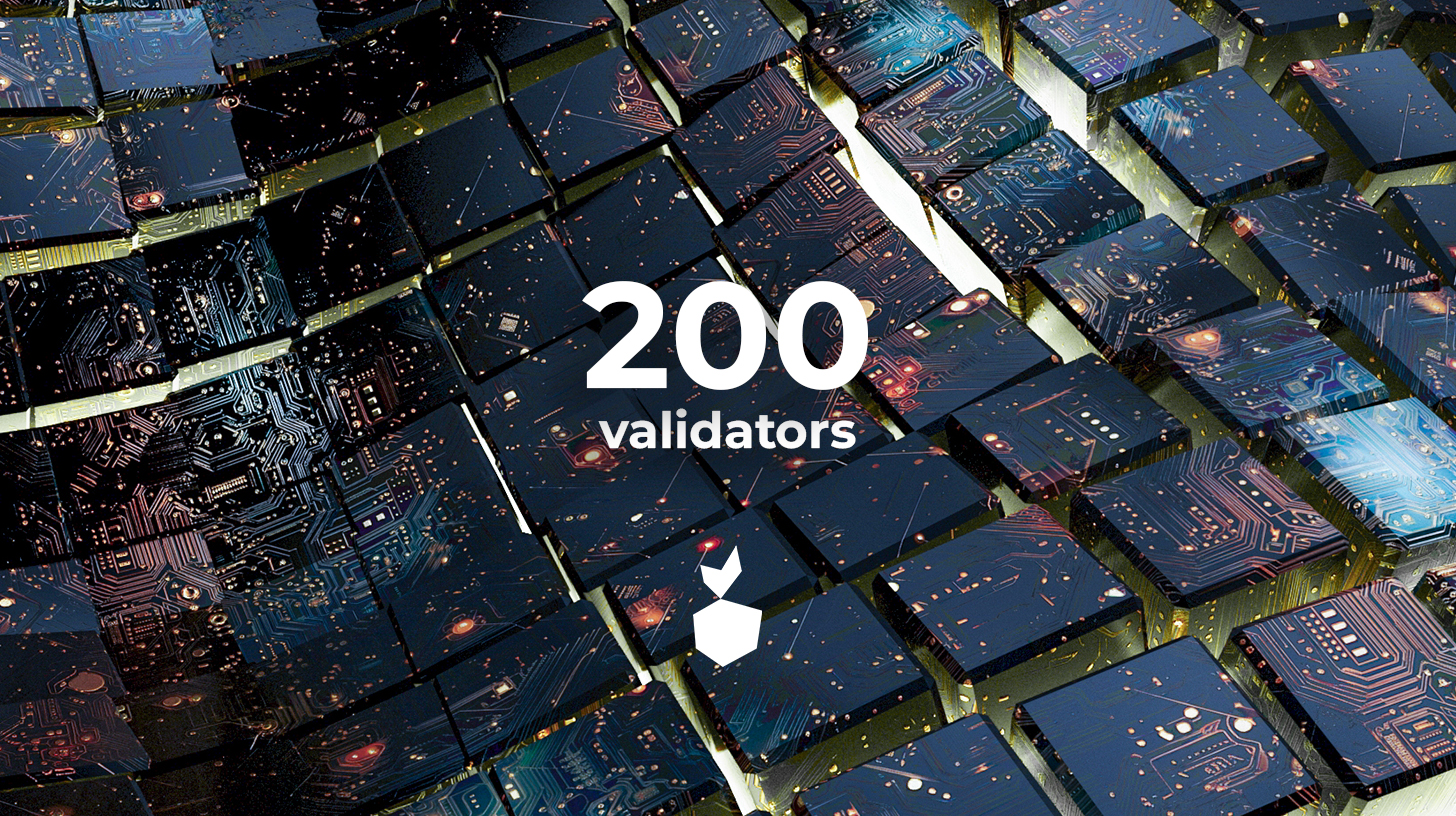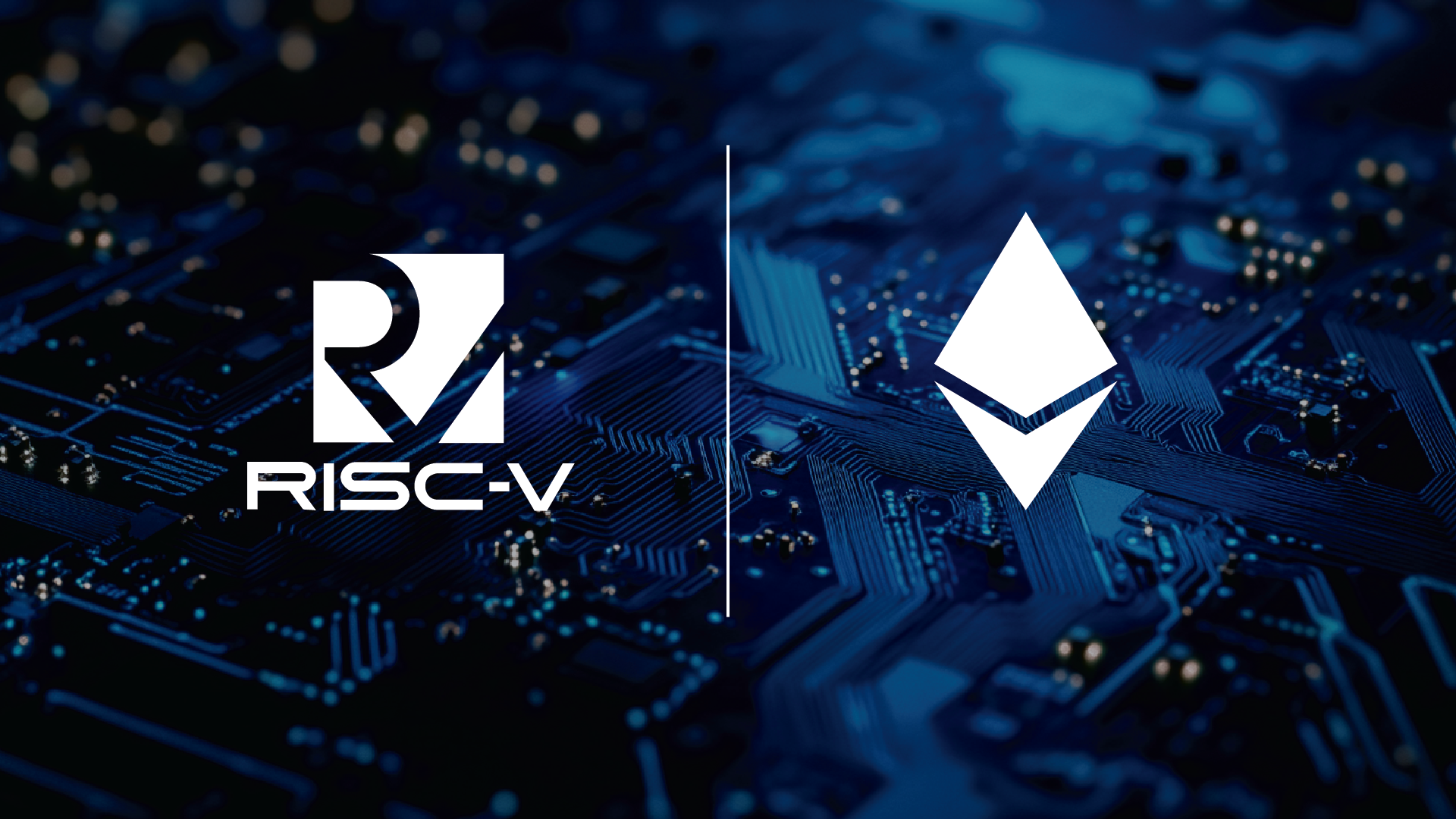· Robert Mordzon · Status · 3 min read
Web3 Pi - Project Update for Golem Ecosystem Fund
This is a summary of the current state of the Web3 Pi project, prepared as part of our involvement in the Golem Ecosystem Fund. It covers completed milestones, key developments, and our focus areas for the rest of 2025.

Web3 Pi: Project Update for Golem Ecosystem Fund (May 2025)
This post provides a progress update on the Web3 Pi project supported by the Golem Ecosystem Fund.
🎥 A more detailed walkthrough with voice-over is available here:
1. What is Web3 Pi and what problem does it address?
Web3 Pi is an open-source project that simplifies the process of running a full Ethereum node on a low-power Raspberry Pi 5.
- The problem: Running your own node is often too complex or expensive, leading many users to rely on centralized RPC providers. This introduces privacy risks and single points of failure.
- The goal: Provide an affordable, accessible alternative that supports decentralization. Web3 Pi delivers a preconfigured OS image, automation tools, and a full hardware kit called the WelcomeBox.
- Target users: Privacy-conscious users, developers, solo stakers, and anyone looking for direct access to Ethereum without intermediaries.
2. What has been completed so far?
The project has delivered the first two milestones of the GEF roadmap and introduced several key features:
- Web3 Pi Imager: A cross-platform desktop app for pre-configuring and flashing the OS image.
- Cockpit + Custom Plugins: Full web-based node management, extended with custom plugins tailored to Web3 Pi.
- Web3 Pi Link: A secure HTTPS tunnel that allows remote access to your node without port forwarding.
- Web3 Pi TxFirewall: A transaction firewall that intercepts and verifies signed Ethereum transactions before they’re sent to the network.
- 200 Validator Test: Together with Golem, we operated 200 Ethereum validators on a single Raspberry Pi 5 for over 250 days. The system performed on par with professional-grade setups and operated on 6,400 ETH of stake.
- Monitoring: Local dashboards via Grafana and an integrated LCD for real-time system and node status.
- Documentation: Guides for hardware assembly, UPS configuration, and troubleshooting are available at docs.web3pi.io.
- RISC-V Compatibility: We successfully ran a full Ethereum node on RISC-V architecture and contributed patches to the Lighthouse client to support it.
3. Focus areas for 2025
The upcoming work is centered around solo staking, user control, and platform stability.
Solo Staking
- Support for clean shutdowns via UPS
- Dual WAN failover configuration
- Network separation between validator and execution clients (NAT/VPN)
- A dedicated, secure OS image for solo staking
- Local monitoring with logging and alerting, no external dependencies
TxFirewall Development
Further improvements planned, including SAFE support, ERC20 transfer checks, and transaction simulation.
Archive Node on x86
Testing Ethereum archive node capabilities on low-power x86 hardware.
Ecosystem and UX Improvements
Continuous refinement of the software stack, monitoring tools, user interface, and hardware integration.
4. Golem Ecosystem Fund support
The GEF contributed in several meaningful ways:
Financial support
Funding enabled full-time development and made it possible to deliver stable tools, not just prototypes. It also supported the creation of documentation and onboarding resources.
Technical feedback
Access to Golem’s team helped validate design choices, improve the system architecture, and accelerate development by avoiding common mistakes.
Research capacity
The support also allowed for long-term testing, hardware experiments (including RISC-V), and feature development that otherwise wouldn’t be feasible within the project’s original scope.
For more details:
🔗 https://web3pi.io
📖 https://docs.web3pi.io



